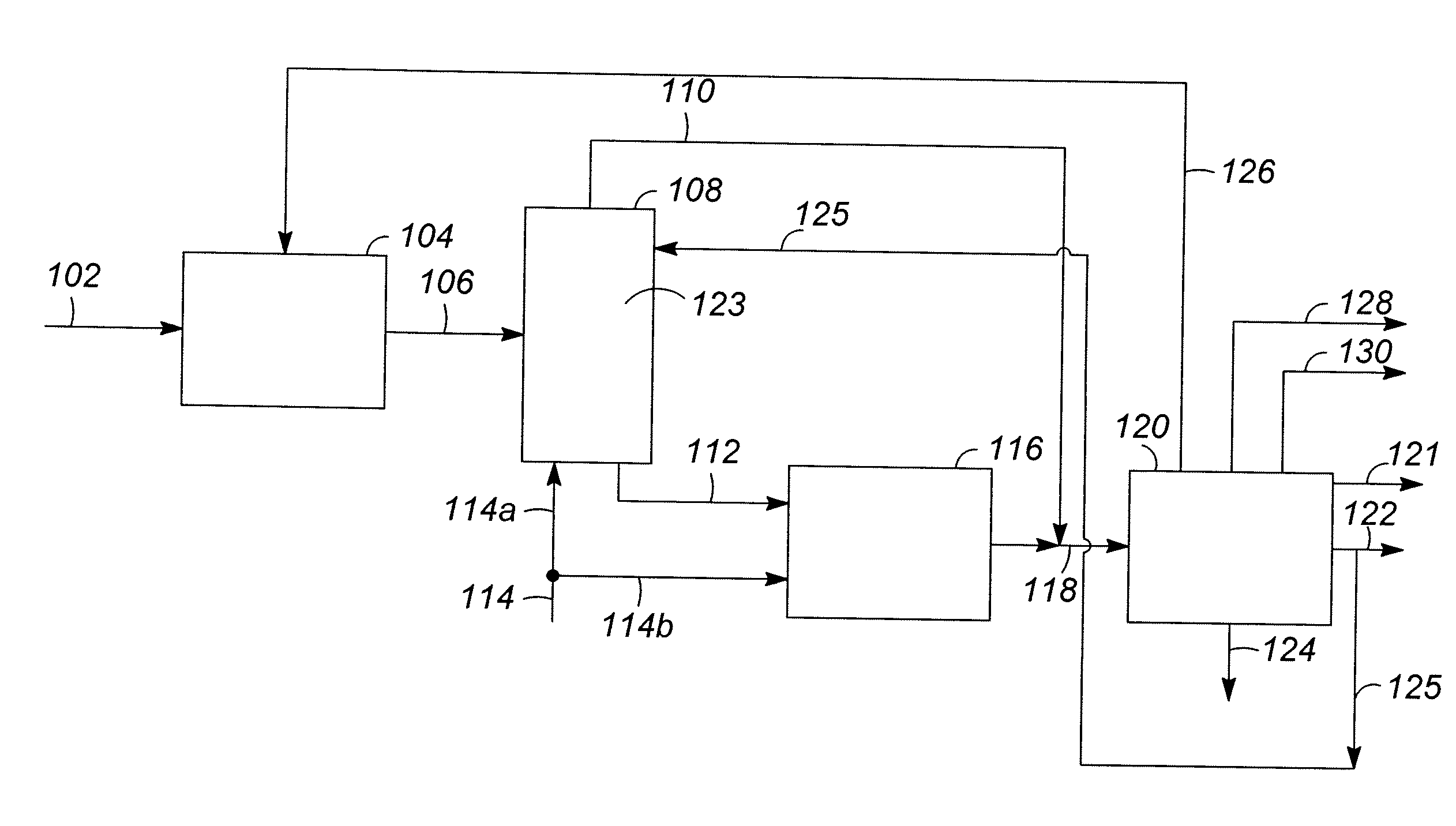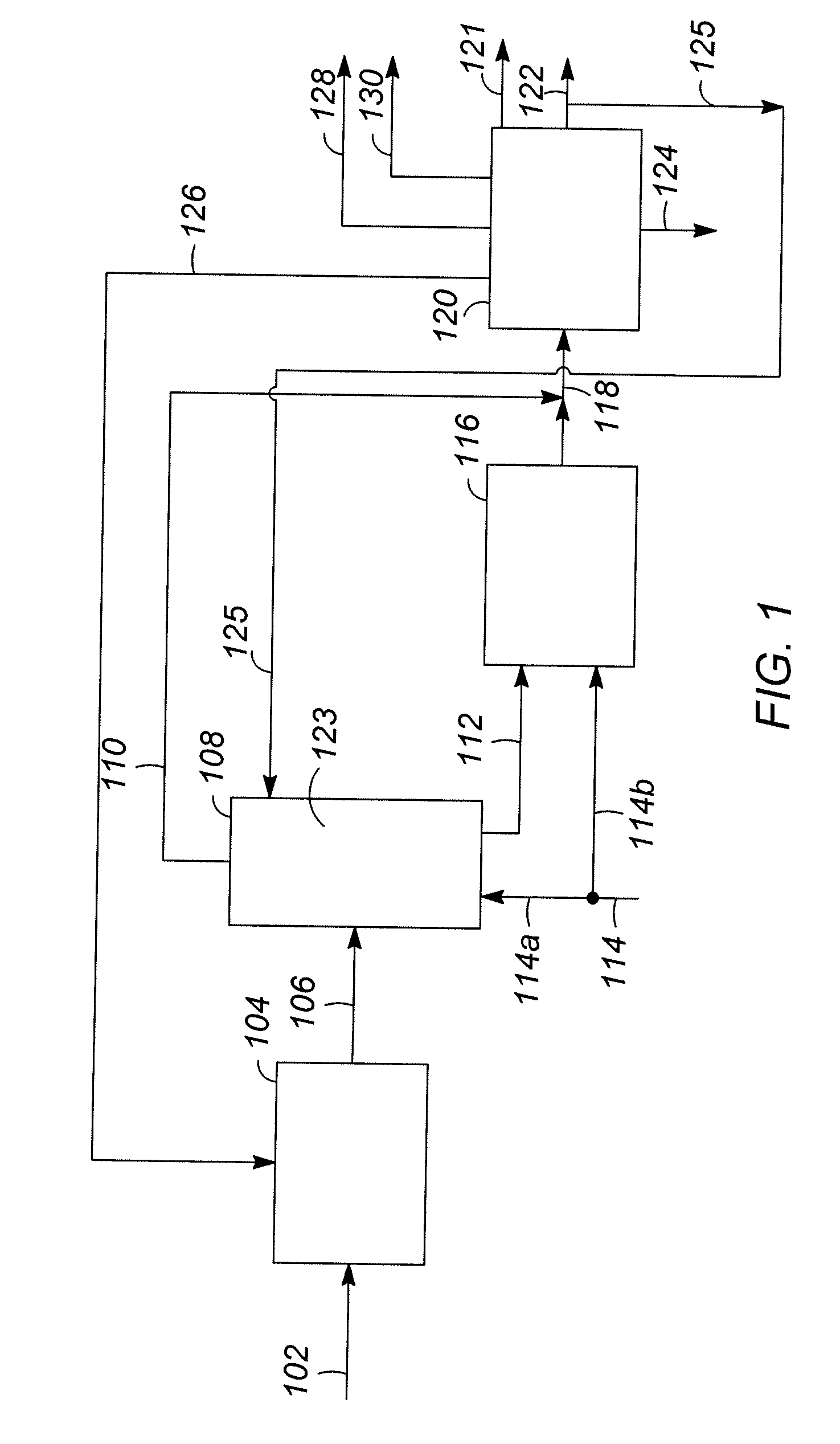Production of Transportation Fuel from Renewable Feedstocks
a technology of renewable feedstocks and transportation fuels, applied in the direction of hydrocarbon oil treatment products, naphtha treatment, treatment with plural parallel stages only, etc., can solve the problem of deactivation of isomerization catalysts, and achieve the effect of reducing the amount of diesel in the first reaction zone and minimizing the number of cracking events per molecul
- Summary
- Abstract
- Description
- Claims
- Application Information
AI Technical Summary
Benefits of technology
Problems solved by technology
Method used
Image
Examples
Embodiment Construction
[0012]As stated, the present invention relates to a process for producing a two hydrocarbon streams, a diesel boiling point range product and an aviation boiling point range product, from renewable feedstocks such as feedstocks originating from plants or animals. The term renewable feedstock is meant to include feedstocks other than those obtained from petroleum crude oil. Another term that has been used to describe this class of feedstock is biorenewable fats and oils. The renewable feedstocks that can be used in the present invention include any of those which comprise glycerides and free fatty acids (FFA). Most of the glycerides will be triglycerides, but monoglycerides and diglycerides may be present and processed as well. Another class of compounds appropriate for these processes fatty acid alkyl esters (FAAE), such as fatty acid methyl ester (FAME) or fatty acid ethyl ester (FAEE). Examples of these renewable feedstocks include, but are not limited to, canola oil, corn oil, so...
PUM
| Property | Measurement | Unit |
|---|---|---|
| Temperature | aaaaa | aaaaa |
| Temperature | aaaaa | aaaaa |
| Temperature | aaaaa | aaaaa |
Abstract
Description
Claims
Application Information
 Login to View More
Login to View More - R&D
- Intellectual Property
- Life Sciences
- Materials
- Tech Scout
- Unparalleled Data Quality
- Higher Quality Content
- 60% Fewer Hallucinations
Browse by: Latest US Patents, China's latest patents, Technical Efficacy Thesaurus, Application Domain, Technology Topic, Popular Technical Reports.
© 2025 PatSnap. All rights reserved.Legal|Privacy policy|Modern Slavery Act Transparency Statement|Sitemap|About US| Contact US: help@patsnap.com



